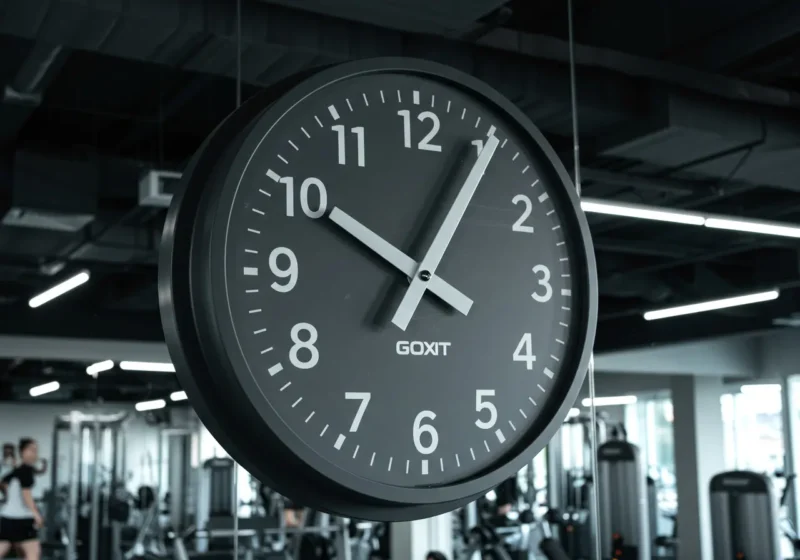Fit Fellows, let’s talk about the elephant in the room, the perennial excuse we all lean on when it comes to hitting the gym or just getting off the couch: “I don’t have time.” We’ve all said it, right? Life throws curveballs – work deadlines pile up, the kids have activities, something always seems to pop up that takes priority. Fitness often feels like a luxury, something you’ll find time for when things settle down. But let’s be real, “settling down” is a myth. The truth is, you don’t find time for fitness, you have to make time for it. It’s a subtle but massive mindset shift, one that transforms your schedule from a rigid cage of obligations into a canvas where you deliberately paint in the things that truly matter to your well-being.
Mastering time management for consistent workouts isn’t about magic or squeezing blood from a stone. It’s about getting smart with your schedule and making a non-negotiable commitment to yourself. It might mean setting the alarm a bit earlier, turning your lunch break into a power walk, or scheduling your sweat sessions with the same seriousness you’d give a doctor’s appointment or a client meeting. The key is being realistic about what you can actually commit to consistently, and then protecting that time like it’s your most valuable asset. And hey, bringing someone along for the ride can make it stickier and a whole lot more fun.
Why This Matters More Than You Think
So, why bother going through the effort of carving out this time? Well, beyond the obvious physical benefits – getting stronger, having more energy, feeling better in your own skin – prioritizing your fitness sends a powerful message to yourself: “I am important, and my health matters.” Consistency is the name of the game when it comes to seeing results and building lasting habits. Sporadic bursts of effort are good, but regular, scheduled activity builds momentum and makes fitness a natural part of your life, not just an occasional chore. It’s an investment in your long-term health and happiness, one that pays dividends in every other area of your life. Consistent movement helps manage stress, improves sleep, boosts mood, and increases focus. It’s foundational to living well.
Getting Ready: What You Need
Okay, ready to start making that time? What do you actually need to get going? First off, a dose of honesty with yourself. Take a good look at your current routine. Where is your time really going? It also helps to have a way to visualize your schedule – a physical planner, a digital calendar app, whatever works for you. You need to understand your own energy levels throughout the day. Are you a morning person or a night owl? Knowing this helps you schedule workouts when you’re most likely to stick with them. And finally, you need that commitment – a genuine desire to make this work. Don’t worry about needing fancy equipment; bodyweight exercises, walking, or jogging require nothing but your own two feet and a bit of space. Comfortable clothes and supportive shoes are a good start, but you don’t need to break the bank.
The Practical Steps: How to Make Time
Now for the nitty-gritty: the how-to.
- Conduct a Time Audit: For a few days, track exactly how you spend your time. You might be surprised where the minutes and hours are actually going. Are there time sinks you can reduce or eliminate?
- Identify Your Priorities: Where does fitness realistically fit in your life right now? Be honest. Don’t aim for an hour a day if that’s just not feasible. Start smaller.
- Schedule Your Workouts: Treat them like any other important appointment. Block out specific times in your calendar. Don’t just say “I’ll work out sometime today.” Say “I’m working out from 6:30 AM to 7:00 AM.”
- Be Strategic with Timing: Can you work out during your lunch break? Before work? After the kids are in bed? Find the pockets of time that already exist or that you can realistically create.
- Embrace Shorter Sessions: You don’t need to spend an hour at the gym every time. A high-intensity 20-minute bodyweight circuit or a brisk 30-minute walk is infinitely better than doing nothing. Consistency over duration, especially when you’re starting. Need ideas for quick hits?
- 15-minute HIIT circuit (jumping jacks, squats, push-ups, lunges, plank)
- 20-minute power walk or jog
- 10-minute core routine
- 15-minute stretching or yoga session
- Quick climb up and down the stairs a few times
- Stack Your Habits: Can you pair a workout with something you already do? Listen to your favorite podcast only while you’re on a run. Walk the dog for an extra loop and make it a power walk.
- Leverage Your Commute (if applicable): Can you walk or bike part or all of the way to work? Can you use waiting time for quick bodyweight exercises?
- Have a Backup Plan: Life happens. You’ll miss a scheduled workout sometimes. Don’t let it derail you completely. Have a plan B – maybe a shorter home workout you can do quickly, or reschedule for later in the day or the next day.
- Get Accountable: Tell a friend your plan, join a fitness group, or find a workout buddy. Knowing someone is waiting for you makes skipping a lot harder.
- Start Small and Build Momentum: Don’t try to go from zero to five intense workouts a week. Begin with two or three shorter sessions and gradually increase as it becomes a habit.
Your Toolkit: Resources and Approaches
There are plenty of tools out there to help you. Simple calendar apps like Google Calendar or Outlook are essential for blocking out time. Habit tracking apps can give you that visual satisfaction of checking off your workout days. There are countless fitness apps offering short, effective workouts you can do anywhere with minimal equipment. Exploring different types of activity – walking, running, cycling, dancing, bodyweight training, yoga – can help you find what you enjoy and what fits into your available time slots. Online communities and social media groups can also provide support and motivation.
Putting It All Together
Taking control of your schedule and deliberately making space for fitness is a skill, and like any skill, it gets easier with practice. It might feel awkward or difficult at first, but the more you do it, the more natural it becomes. Remember, it’s not about being perfect; it’s about being consistent. By making time for your physical well-being, you’re not just scheduling workouts; you’re scheduling a healthier, more energetic, and more fulfilling life. So, let’s stop saying “I don’t have time” and start saying “I’m making time.” You’ve got this.

















